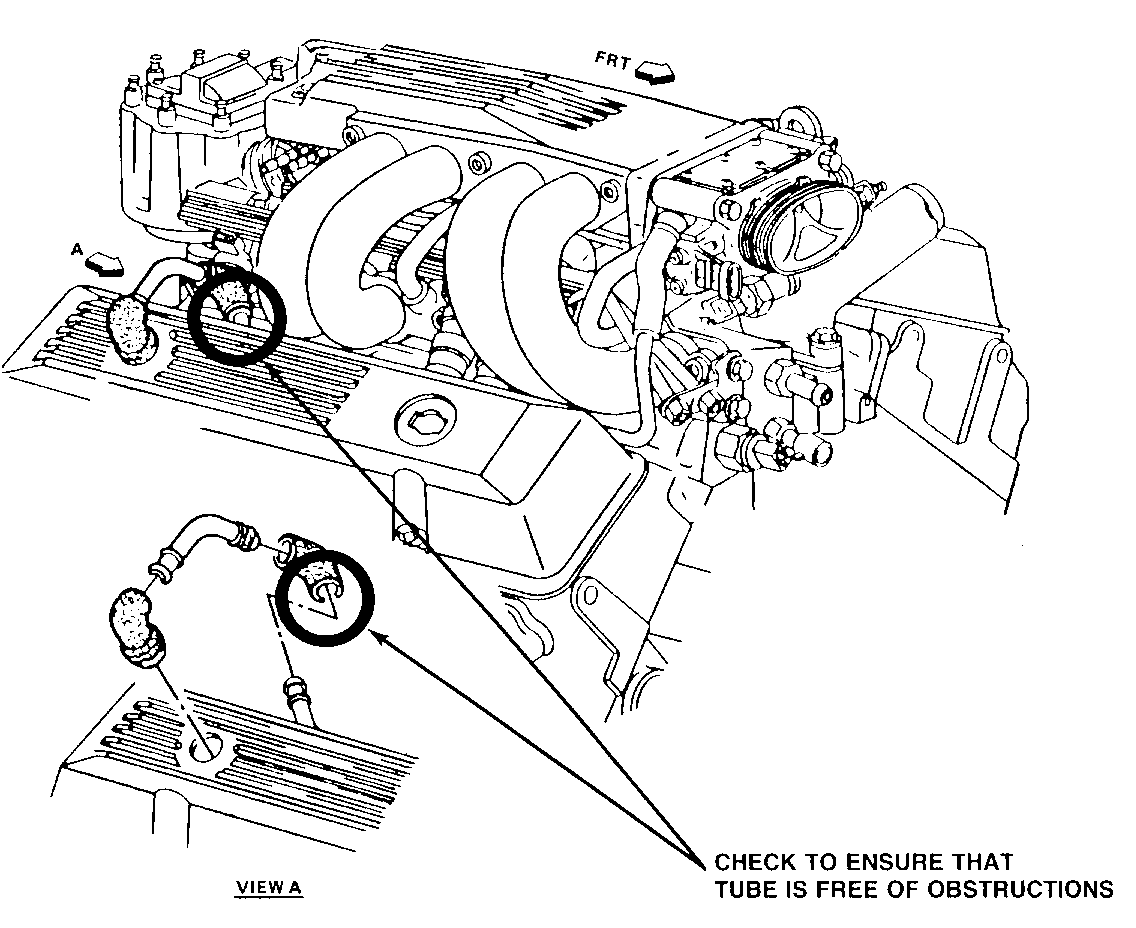C.E.L. ON/ CODE 36 SET MAF SENSOR BURN-OFF FAULT

1986-87 FIREBIRD MODELS WITH PFI ENGINES (ENGINE CODES F AND 8)
There have been reports of Code 36 being set on 1986-87 Firebird vehicles with 5.OL or 5.7L PFI engines because of a plugged crankcase vent tube or faulty MAF power or burn-off relays.
Crankcase Vent Tube:
The illustration shows the engine vent tube that has been found blocked. The fresh air intake should be free from obstructions from the throttle body into the valve rocker cover.
Relays:
------ In order for the burn-off cycle to properly take place, it isessential that the proper voltage be available to the MAF sensor during the burn-off cycle, which takes place after engine shutdown. The proper voltage must be available at terminal "E" (12 volt power circuit) of the MAF sensor as well as at terminal "D" (the burn-off signal circuit). To test for the proper voltage, the circuit must be tested without disconnecting any of the components. Because relay contacts create essentially a piece of wire when closed, there should not be any voltage drop between the input and the output terminals of the relay. If the diagnostic chart for Code 36 indicates the problem is intermittent or Code 36 still exists after making a repair the following tests should be performed:
With the relays still connected, connect a digital voltmeter between the proper burn-off relay terminal (circuit 994) and a good ground. Refer to Section 6E3 of the Service Manual for determining which burn-off relay terminal is used for burn-off (Circuit 994).
To properly test for a faulty relay, it will be necessary to establish the conditions for the burn-off cycle to occur. This can be accomp- lished by grounding the diagnostic test terminal (ALDL Pin B) and observing the "Service Engine Soon" light until the light indicates the system is in closed loop. After closed loop is confirmed, unground the diagnostic terminal, turn the ignition off, and observe the voltmeter reading.
Observe the following voltmeter sequence immediately after engine shutdown:
About 5 seconds after engine shutdown, the ECM should energize the burn-off relay for about 1 second, and during this period there should be 10-12 volts coming out of the burn-off relay (Circuit 994) . After the I second period, the voltage should go back to 0 volts. If the output voltage of the relay is less than 10 volts when energized, the relay should be replaced.
If the voltage is correct coming out of the burn-off relay, repeat the test on the MAF power relay (Circuit 993) . The normally closed contacts of the power relay are used for the burn-off cycle, and the power is supplied from the burn-off relay. As with the burn-off relay the output voltage during the I second burn-off period should be above 10 volts or the relay is faulty. The resistance across the closed contacts of the MAF power relay should also be checked using an ohmmeter. (Refer to the service manual for properly identifying the correct relay terminals.) The resistance should be less than I OHM across the closed set of contacts. If the resistance is greater than I OHM, replace the relay.
Warranty Information:
Labor Operation Number: T1212
Labor Time : 0.6 Hours

General Motors bulletins are intended for use by professional technicians, not a "do-it-yourselfer". They are written to inform those technicians of conditions that may occur on some vehicles, or to provide information that could assist in the proper service of a vehicle. Properly trained technicians have the equipment, tools, safety instructions and know-how to do a job properly and safely. If a condition is described, do not assume that the bulletin applies to your vehicle, or that your vehicle will have that condition. See a General Motors dealer servicing your brand of General Motors vehicle for information on whether your vehicle may benefit from the information.
